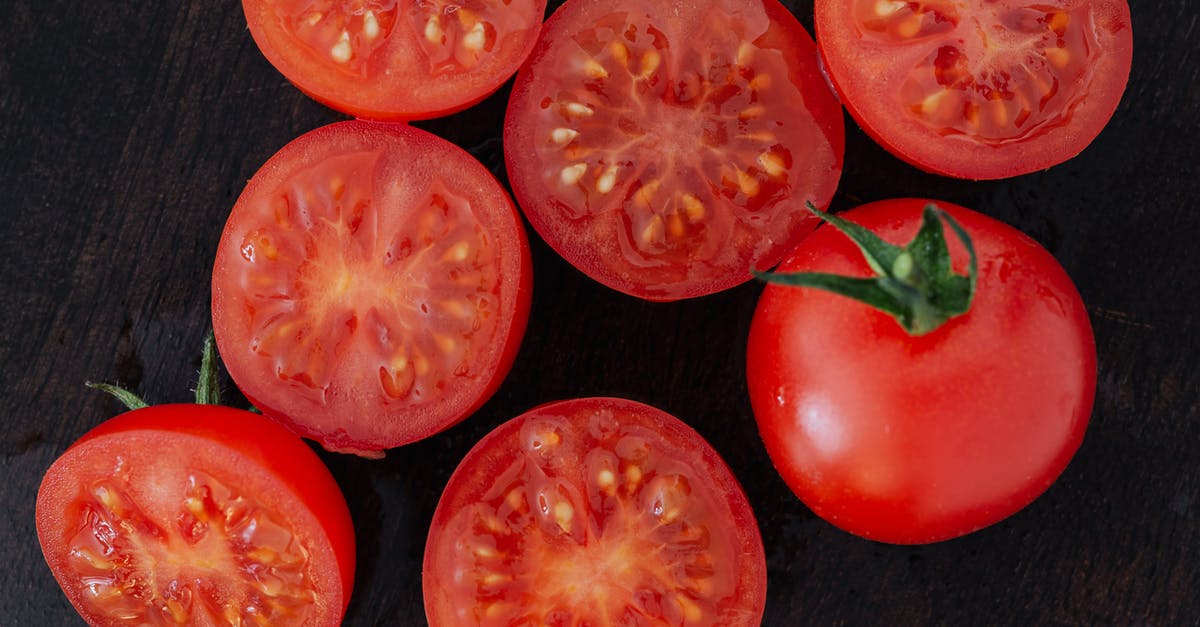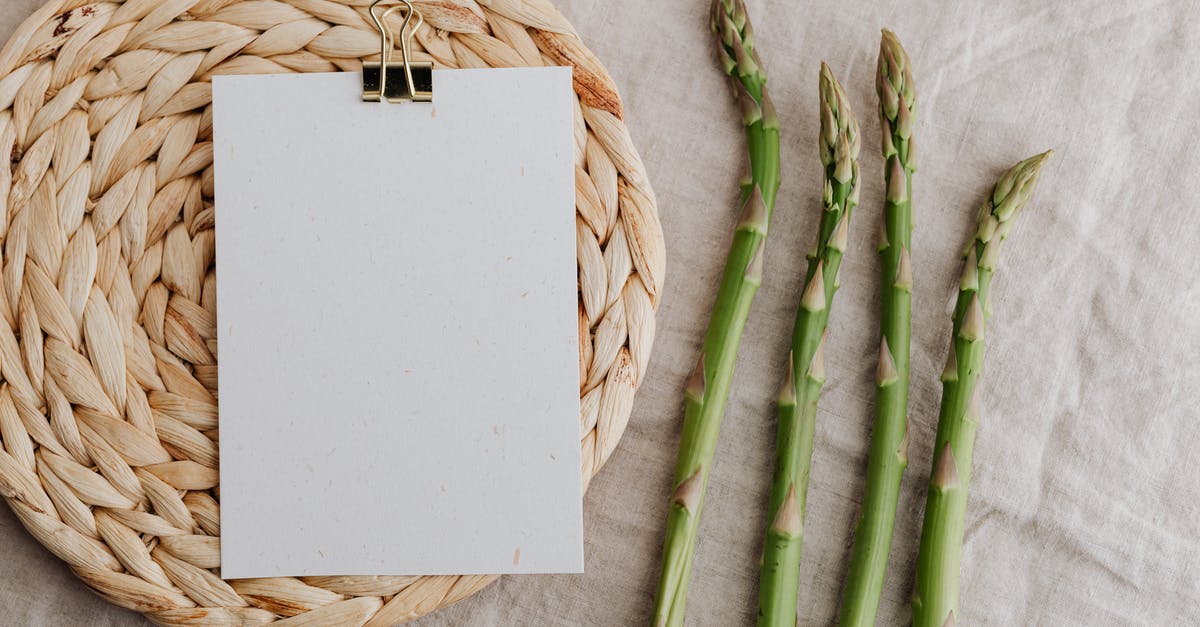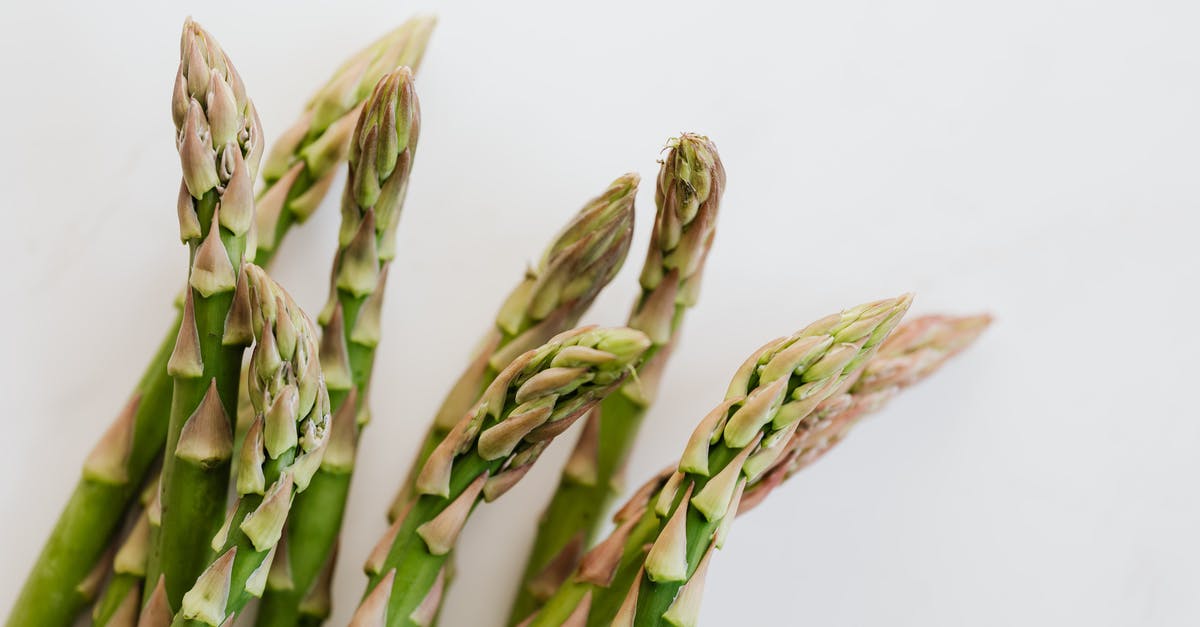How to clean caked on stains from juicing vegetables?

I've got a "Green Star" twin gear juicer which I have used to juice a variety of vegetables, but mostly carrots and celery. I always juice the celery last, as that seems to minimize the amount of direct orange staining from the carrots. But over time I have noticed a buildup or "caking" of stains on various surfaces that the juice touches despite cleaning after each use with warm soapy water. The stains are brownish in color and form a "film" that seems to increase in thickness over time.
In the past I have found that once the stain gets "thick" enough I can scrape it off if I have the appropriate plastic tool or even my fingernails, however only on certain surfaces (some are hard to reach or I don't have a suitable edge for the shape of the surface). This has also worn the tip of my plastic cleaning device that came with the unit down to where it's not much good for cleaning any more anyway.
I have recently tried a cleaner that contains oxalic acid, and while this seems to help, the directions say to not leave it on the surface for more than a minute but even 5-10 minutes applied directly to part of the stain doesn't break it down. I have tried soaking the strainer in vinegar for half an hour, but this also was insufficient.
Here are some pictures showing the staining:



This picture is of the end piece which controls pulp ejection. I did a test where I left a blob of cleaning with oxalic acid for 10 minutes. As you can see it helped somewhat but did not remove the stain:
Update: I have tried soaking in water and after around 36 hours it still isn't loosening up any.
As a note, I also have a similar problem with the glass bottles I store the juice in until I drink it. In this case it's a much thinner film, but it does not completely rinse off and also builds up over time. I used to use a plastic bristle cleaner and it worked presumably because the film doesn't stick to glass as well as it does plastic, but I kept breaking the bottles trying to pull out the cleaner - the mouth is very narrow and it was very difficult to get something that would both fit into the opening and be wide enough to reach all the insides. I'm using a thinner scrubber now but it can't reach everywhere. I tried soaking a patch overnight in lime juice as well as an hour with oxalic acid and neither really made a noticable difference.
Best Answer
This doesn't look like a stain, it is more of a buildup. It seems to consist of fruit pulp which has dried onto the juicer parts.
Getting rid of the buildup
Luckily, fruit pulp can be softened by water, even though it may take some time if it is very ancient. It will be indeed better to add something to the water, but as you note, the stronger acids like oxalic acid may be too aggressive to the plastic itself. The weak culinary acids like citric acid or ascorbic acid are usually made from fruit itself, so they are not only rather weak, there is also good reason why fruit matter will be quite resistant to them.
So, my suggestion for the buildup is to soak all parts for maybe 2-3 days in water with some dishwasher detergent in it. The water itself will already soften quite a bit of it, and the detergent is your best bet for attacking dried-on food. If you are afraid of damaging the plastic because it is exposed for such a long time, you can also leave it for only a short time in a detergent bath, maybe as short as 3-4 hours, and then pour out and continue with clean water.
Once the whole thing has softened, you should be able to get it off by diligently working with a brush. If you have lost or used up the small brush that comes with the juicer, use a toothbrush. Then rinse and let dry.
Once you have got rid of anything that is caked on, you can again use the juicer. It may have gotten actual stains - that is, the plastic may have gotten a different color - but that is only a cosmetic problem.
Regular maintenance
These juicers are intended to be taken apart and washed after each use, or once daily if you are using them throughout the day. When you switch to a daily washing, you won't get such a buildup any more. The juicer parts will only have some wet fruit pulp on the surface, which can be handwashed in a basin easily, just like you would with a bowl that held fruit salad, except that it's a bit of a chore to get all the nooks and crannies. The exception is the screen, where the pulp clogs the holes, and lodges itself in the place where the perforated metal meets the plastic frame. There, you have to spend some minutes with a small brush (again, the original one or a toothbrush) to get it clean. The body of the juicer can also be wiped easily with a damp cloth, but not dripping wet, because the casing is not waterproof.
If you only make your juice in the morning and don't have time to wash everything before you leave, it is sufficient to take it apart and dump the parts in a basin of clean water, they will still be very easy to clean in the evening.
If you happen to get to a point where you have dried-on juice and pulp which wasn't cleaned in the first couple of days (but not hardened to the state you are showing in your pictures, more a fruit-leather state), then a handheld steam cleaner works much better than any firm tools. It is especially good for getting the gunk out of the front rings where the casing meets the removable parts.
Pictures about "How to clean caked on stains from juicing vegetables?"



Quick Answer about "How to clean caked on stains from juicing vegetables?"
Step 4: Scrub away stains Dampen a soft cloth with water, dip it in vinegar, and scrub the discolored area. If it doesn't rinse clean, clean your juicer with baking soda by applying a healthy sprinkle in it and letting it sit for a half hour. Then scrub with the cloth dipped in vinegar, and rinse.How do you get vegetable stains out of a juicer?
If your juicer parts have a coating of mineral deposits or hard water scale,use a mixture of 1 part water to one part vinegar, with the juice of one lemon added to it. Allow it to soak at least an hour, and preferable overnight.How do you get stains out of juicer parts?
Q. There's a lot of residue on my juicer, is there a way to remove...How do you clean residue off a juicer?
Step 1: Mix a solution of two cups cool water and one tablespoon dishwashing liquid. Step 2: Using this solution, sponge the stain from the celery with a clean white cloth. Step 3: Next, blot at the stain until the liquid is absorbed. Step 4: Repeat steps 2-3 until the celery stain is removed from the upholstery.How to Deep Clean and Get Stains out of your Juicer
More answers regarding how to clean caked on stains from juicing vegetables?
Answer 2
I'd try a soak with home brewing cleaner/steriliser (example is just the brand I have). It's pretty good on fruit stains as well as tea etc. You may need to scrub as well, and make it up a little stronger than it says.
I doubt you'll ever get it looking as good as new, but this should help quite a bit.
Answer 3
Harsh ways: acid (you tried), alkalies (sodium carbonate), boiling water, oxidizing agents (peroxide or chlorine)
You might consider an enzymatic cleaner. These are available as dishwashing detergents and laundry detergents. Example:
https://spoilerfoiler.com/enzyme-based-dishwasher-detergent/
Rather than harsh chemicals these use various enzymes to digest the molecules responsible for stains. Supposedly they are good for grass stains. Enzymes will not digest the plastic or corrode the metal. I am not sure what is available where you are but these products have been on the shelves in the US for some years.
Answer 4
After cleaning the buildup, I use to soak the parts in warm water with bleach. This removes all the tinting from carrots or other vegetables. After the soak (I use overnight, +- 8h), make sure to wash all parts carefully to get rid of the bleach.
Answer 5
For this i would recommend you find a lactic acid kitchen appliance descaler. Failing that, i would then suggest dilute sodium hypochlorite.
For either of those two chemicals you will need to follow the instructions and MSDS precautions.
Sources: Stack Exchange - This article follows the attribution requirements of Stack Exchange and is licensed under CC BY-SA 3.0.
Images: Karolina Grabowska, Karolina Grabowska, Karolina Grabowska, Karolina Grabowska

